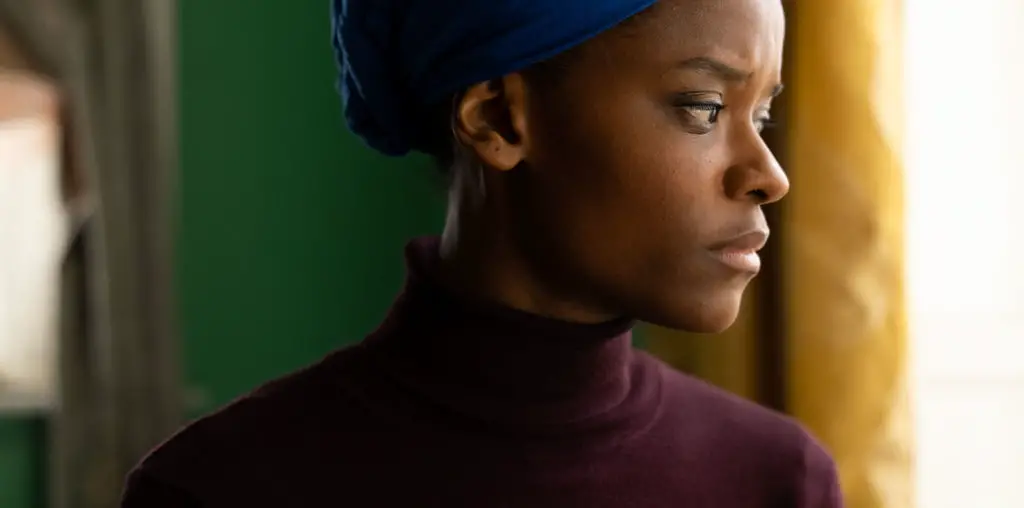
Unless you are a diehard devotee of the Yiddish-language culture, there is little reason to seek out “The Komediant,” a 1999 Isræli documentary which is receiving a belated U.S. theatrical release. And even if you love all things Yiddish, there is precious little to embrace here.
“The Komediant” is the story of the Burstein family, who played the Yiddish-language theaters and vaudeville houses across Europe, South America and the United States. The clan was founded by Pesachk’e Burstein, a Polish-born Orthodox Jew who ran away from his home as a teenager to join a traveling theatrical group. Burstein came to New York in 1924 and found success in the thriving Yiddish-language theatrical scene in the city’s Second Avenue entertainment district. He was later joined by an aspiring actress named Lillian Lux, and the two were married while touring in Buenos Aires. In 1945, the couple became the parents of twins named Susan and Michæl. The children were eventually integrated into their act, although problems arose as they grew up when Susan (an uncommonly talented ventriloquist) abruptly quit show business at age 18 to marry while Michæl, billing himself as Mike Burstyn, achieved solo success in Isræli films and sought out his own career beyond the narrowing world of Yiddish-language entertainment.
One of the main problems with “The Komediant” is its failure to properly define Pesachk’e Burstein (who was also billed as Paul Burstein, although no one in the film refers to him by the Anglicized name). It would seem there are no recorded or filmed interviews with Burstein, so we never hear his voice regarding his life and career; all recollections come from his children (who are very charming despite some obvious resentments in recalling their father) and his wife (whose imperious personality and unflattering Fauvist-style make-up makes her something of a self-absorbed old bag). The relatively few filmed performances that are presented here are bits of mediocre shtick and dull song, and it would suggest that Burstein was a fairly limited vaudeville performer who prospered as being a big fish in a relatively small talent pool rather than being a big talent.
“The Komediant” also leaves many questions curiously unanswered. Burstein’s first marriage and the child of that union are mentioned in the briefest of passings, yet the fate of his first wife and their offspring are never presented here. Burstein, unlike many other Yiddish theater stars, made no attempt to crossover into English-speaking entertainment and no reason is giving for his reluctance to move out of Yiddish productions. Burstein was also absent from Yiddish-language films that were produced throughout the 1930s, and it is never clear why he never appeared in these productions. It would also seem the man was something of an idiot in one harrowing situation: Burstein and Lux were touring Europe in the summer of 1939 and he insisted on staying in Poland to complete a theatrical tour. Lux, who was considerably more aware of the current political situation, refused and was able to secure passage on a cruise ship that left Poland days before the German invasion and the start of World War II.
The Burstein family brought their act to countries which were infamous for their anti-Semitic intolerance, but the film offers no evidence of any problems encountered in their wide travels with one unexpected incident: in Isræl, of all places, where the government shut down a 1952 Yiddish-language show as part of its (pardon the expression) ham-handed attempt to impose Hebrew as the national language. The family left Isræl, though they returned years later to resume theatrical performances and to appear in the Oscar-nominated comedy film “Sallah” (though, oddly, the clip from that film presented here does focus on the Bursteins but rather on the Isræli actor Topol in his breakthrough performance).
Towards the end of the film, “The Komediant” offers a touching eulogy to the show biz orbit where the Bursteins reigned. In visiting Burstein’s grave within a cemetery section devoted to the final resting places of the Yiddish theater stars, the late star’s daughter looks out at the sea of headstones and quietly exclaims “This is the Yiddish theater.” This poignant observation on the passing of a unique art form is truly heartbreaking, and it is a shame “The Komediant” could not have offered a better tribute to this lost world and its players.

